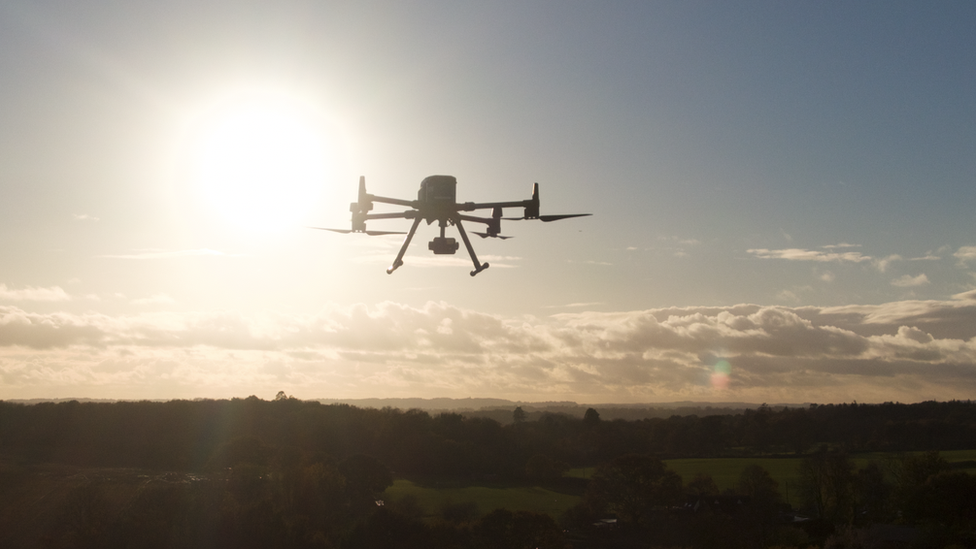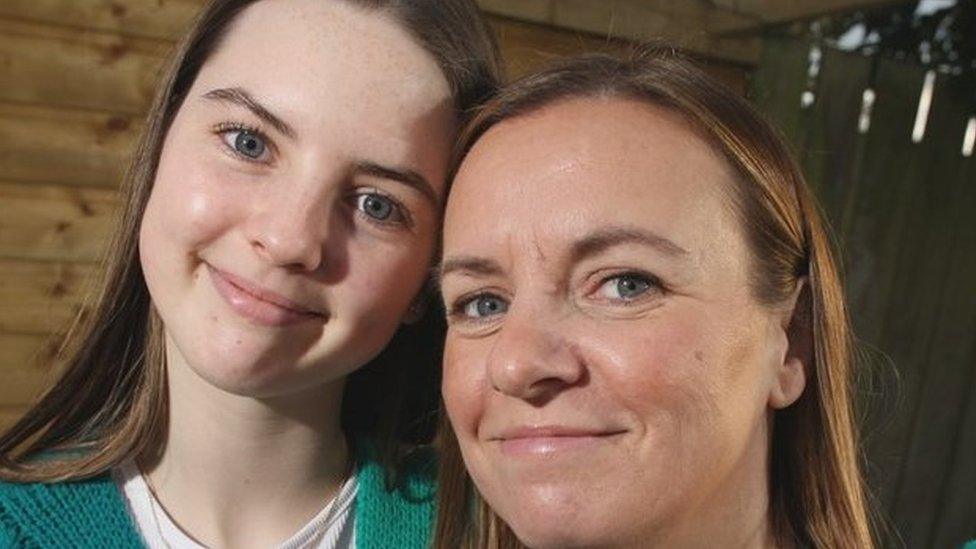Welsh Ambulance service to test drone-delivered defibrillators
- Published
- comments

Welsh Ambulance Service said drones are the quickest way to deliver defibrillators to patients
Plans to deliver defibrillators to patients by drones are being developed by the Welsh Ambulance Service.
It has already conducted "test flights" and will now interview people who have helped heart attack victims to understand best practices.
Defibrillators are used - alongside resuscitation or CPR , external- to give the best chance of survival after a cardiac arrest.
The ambulance service said it could be the difference between life and death.
More than 6,000 people have a cardiac arrest in Wales every year, a spokesperson said.
The Welsh Ambulance Services' Carl Powell said an ambulance would always be sent as quickly as possible, "but starting chest compressions and delivering an electric shock with a defibrillators in the meantime could mean the difference between life and death".
He added that access to defibrillators can also be difficult, especially in rural areas, and that a similar initiative was being used in Sweden.
"Nobody has yet demonstrated how we could do this in the UK - until now," Mr Powell said.
The Drone-Delivered Defibrillators study - or 3D project - is a partnership between the Welsh Ambulance Service, the University of Warwick and SkyBound, and has already conducted "test flights" to understand how quickly a defibrillator could be deployed following a 999 call.
The next phase will involve interviews with people who have helped cardiac arrest patients to understand how a defibrillator delivered by drone could have been useful.
Long-distance "beyond visual line of sight" flights are also being conducted to test how communication between a 999 control room and a drone operation team could work during a cardiac arrest call.
"Drone-delivered defibrillators might sound like something from a sci-fi movie, but if it's the quickest way to get a defibrillator to a patient," said Prof Nigel Rees, assistant director of research and innovation at the ambulance service.
"Lone bystanders aren't currently instructed by ambulance call handlers to leave a patient to retrieve a nearby defibrillator, as the priority is the chest compressions.
"Delivering a defibrillator directly to them would negate the need to leave the patient, and potentially improve chances of survival."
The results of the 3D project are due to be announced in early 2025.

TREE ON A HILL: In the blink of an eye, Margaret and Clive are on the wrong side of the law
MICHAEL SHEEN'S DIRECTORIAL DEBUT: An ordinary family caught up in extraordinary events

Related topics
- Published22 October 2021

- Published25 May 2023
